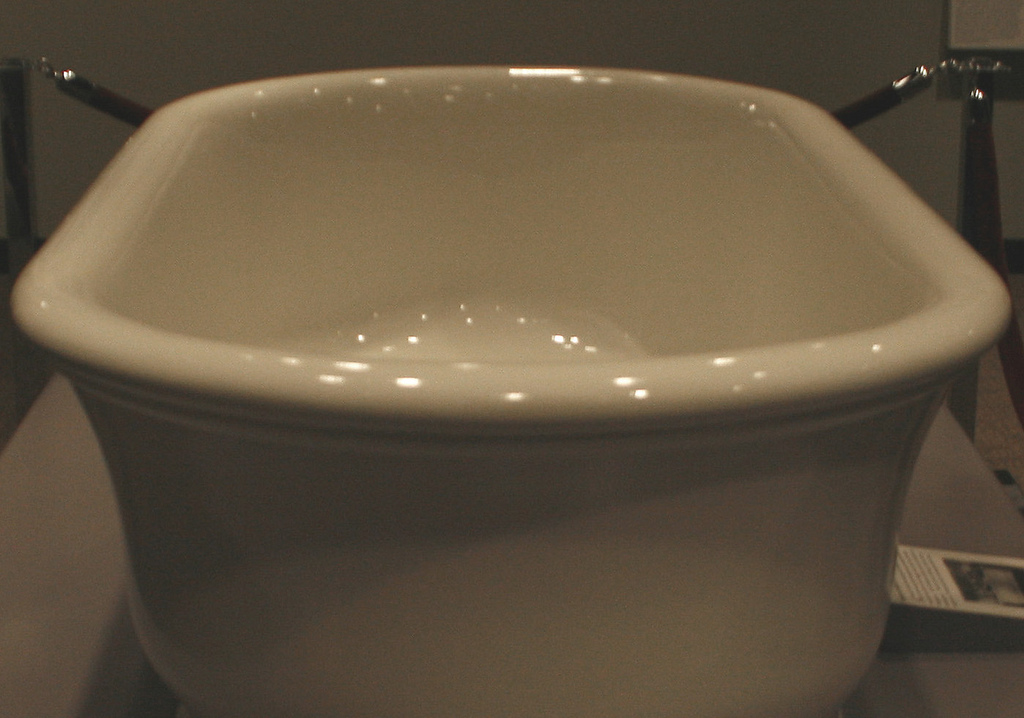A Brief History of the Modern Bathtub: Part 1

Bathing is a basic human process that’s existed since the dawn of mankind, with natural streams and bodies of water serving as communal bathing areas for generations of people. Even as plumbing and hot water became readily accessible, luxury bathhouses and private baths were considered pampering and out of reach of common people in most civilizations. The commonly-available, modern-style bathtub that we know today didn’t come into popular use until the mid-19th century.
Washbowls and Moveable Tubs
Bathtubs weren’t a fixture in many homes before the widespread implementation of indoor plumbing. Instead, they were light and portable, often set aside in storage or placed outdoors if there wasn’t much space in the house. Typically made from sheet copper, zinc, or tin, these tubs were a staple of the modern American home in cities and the frontier alike.
More upscale homes had lead tubs with wooden enclosures that were sometimes equipped with early water heating mechanisms. As the 19th century progressed and running water became more prevalent in society, copper and steel tubs with wooden enclosures or bronze legs became the standard for high-end homes of the era.
Cast Iron Tubs and Glazing
While toilets and sinks were made from cast iron since the late 1850s, the corrosion and rusting problems with the material kept it from being used in bathtubs. Porcelain enamel worked well for cast iron sinks, but the complex shape of bathtubs kept it from being a viable solution. Plus, when filled with hot water, the cast iron would expand and stretch the coating. However, British tub makers eventually solved the problem and created bathtubs made entirely from ceramic with glazed surfaces. These resulted in extremely heavy tubs and made exporting them difficult, but other manufacturers began to adopt the technique and its popularity spread.
Porcelain seemed to be the perfect solution to many complaints about bathtubs in that era. They were smooth, sleek, and easily washable without the risk of rusting. Unfortunately, they were very heavy and expensive compared to steel tubs – sometimes several hundred dollars more expensive. They became a status symbol going into the 1920s and beyond; a necessary feature of any wealthy household.
High-End Bathrooms
A sure sign of progressive thinking and high culture meant your bathroom had several fixtures that served many purposes beyond daily hygiene. Therapeutic showers and soaking tubs transformed simple lavatories into personal spas. After World War I, however, the large homes that would accommodate these multi-fixture bathrooms started to disappear and cast iron, claw-foot tubs became more popular. J.L. Mott Iron Works achieved an iron casting technique that involved firing the coating, then reducing the production costs. This allowed many more homeowners to purchase the claw foot style tub that many older homes still use today.
Next time, we’ll talk about bathtub styles popular after the first World War and the color craze that followed. Until then, contact Seattle Bathtub Guy for any and all bathtub repairs to keep the centerpiece of your bathroom functional and beautiful for years to come. Give us a call today!
A Brief History of the Modern Bathtub: Part 2
Image source, labelled for reuse

Leave a Comment